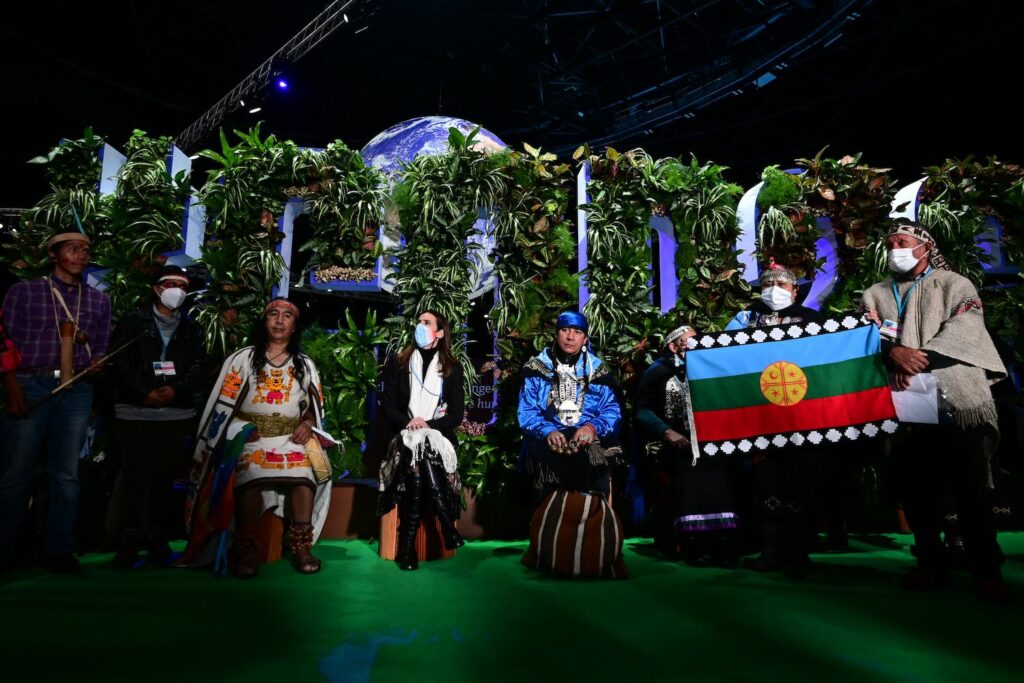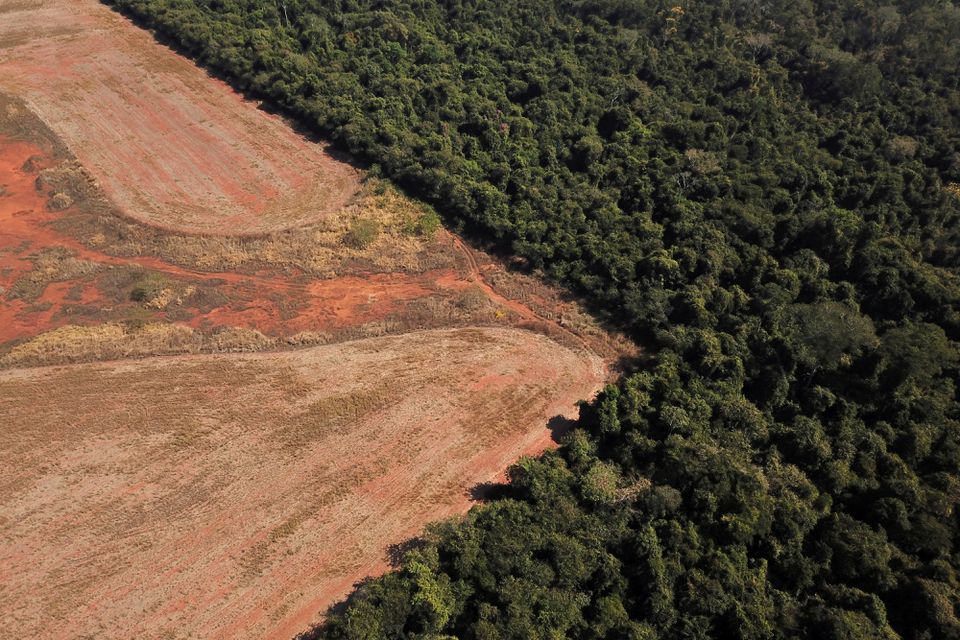
The COP26 World Leaders Summit ‘Action on Forests and Land Use’ brought together a crowd of governments, companies, financial sector representatives, and NGO leaders to make ambitious promises regarding forest preservation and land use stewardship. More than 140 countries made a significant pledge to undertake the collective effort of halting land degradation and forest loss by 2030. The Glasgow Leaders' Declaration on Forest and Land Use was among the first and most audacious announcements made at COP26, which ended after weeks of negotiation on November 13, 2021. Countries spanning from the northern forests of Canada and Russia to the tropical rainforests of Brazil, Colombia, Indonesia and the Democratic Republic of the Congo endorsed the Glasgow Leaders’ Declaration on Forest and Land Use. Together, these countries contain 85% of the world’s forests, an area of over 13 million square miles. In the Declaration, leaders across world governments and industries affirmed the vital role forests play in removing and storing carbon, adapting to the impacts of climate change, and maintaining healthy ecosystem services. Leaders vowed "transformative" action through collaborative efforts to conserve forests, draft sustainable trade and development policies, reduce human vulnerabilities, restructure agricultural policies, and increase financial incentives that will assist in the transition to more sustainable land use.
"We have to stop the devastating loss of our forests,"- and- "end the role of humanity as nature's conqueror, and instead become nature's custodian."
UK Prime, Minister Boris Johnston
Funding pledges followed the declaration, totaling US$19.2 billion. These funding pledges will be supported by US$12 billion of public finance from 12 countries from 2021 – 2025. These billions will be used to support activities in developing countries, including restoring degraded land, reducing wildfires and advancing the rights of indigenous communities. The public sector funding will be accompanied by US$7.2 billion of private sector funding. CEOs from Aviva, Schroders, Axa and more than 30 financial institutions - owning US$8.7 trillion in global assets – will also commit to, by 2025, eliminating their investment and lending portfolios linked to commodity-driven deforestation. The commitment is focused on addressing the agricultural commodities most responsible for the lion’s share of deforestation impacts: beef, soy, palm oil, and pulp/ paper.
"There is no viable solution to the climate crisis without forest and land management by Indigenous Peoples and local communities who have proven that they are the best guardians of the world’s forests”
President of the Ford Foundation, Darren Walker
Included in this nearly US$20 billion financial pledge was US$1.7 billion allocated to help Indigenous peoples and local communities (IPLC) exercise decision-making and design roles in climate programs. The funding - sourced from the UK, Norway, Germany, the US, the Netherlands, and partnership with 17 funders - will support IPLCs in their proven role of protecting the tropical forests that are vital to protecting the planet from climate change, biodiversity loss, and pandemic risk. While the majority of the money in the fund will come from governments, charitable foundations including the Ford Foundation, Bezos Earth Fund, Bloomberg Philanthropies, Arcadia, Wyss Foundation and the Rainforest Trust are contributing more than US$600 million. Historically, few donors have prioritized IPLC tenure and forest management as part of their development aid. A recent study by the Norwegian Rainforest Foundation showed that Indigenous communities and organizations receive less than 1% of the climate funding meant to reduce deforestation; just US$270 million per year on average.

In order for a historic pledge like the Glasgow Declaration to succeed, its goals and priorities must be embedded in new ways of achieving economic growth and development which do not further contribute to deforestation and land degradation. Moving beyond a paper pledge and televised announcement to impactful change will require countries to unify and drive system reform across all five areas of “transformative action” listed in the declaration:
- sustainable production and consumption;
- infrastructure;
- trade;
- finance and investment;
- and support for smallholders, Indigenous peoples and local communities, and their role in forest stewardship.
Nine years is not long to halt forest loss and land degradation. For this to happen, countries, companies, and financial institutions must be accountable for following through on their pledges to end deforestation. They should develop clear and transparent implementation plans, specify measurable performance indicators, and set specific milestones of achievement on the pathway to the 2030 goals. They should openly and regularly monitor, report and verify- through an independent observer- the progress of their deforestation pledges. For the private sector to deliver on their promise of sustainable business and financing, companies should trace and disclose the origins of agricultural commodities they purchase.
While the Glasgow Leaders' Declaration on Forest and Land Use and related pledges are a welcome affirmation of coordinated diplomatic efforts to reduce deforestation and pivot to more sustainable land use, one cannot help but wonder if this latest declaration will fall short. Many of the same countries also signed the 2014 New York Declaration on Forests which pledged to halve deforestation by 2020 and end it completely by 2030. A shocking 12.2 million hectares of forest cover were lost in the tropics in 2020, an increase of 12% on 2019. This ambitious pledge to end deforestation in less than a decade will be monitored by a world, especially its youth, that demands immediate climate action.

Looking Ahead: Upcoming Global Food, Agriculture, Climate Change and International Development Conferences
- The Tokyo Nutrition for Growth (N4G) Summit - December 7-8, 2021
- The 9th Annual World Ocean Summit & ExpoOpens in a new window - March 1-3, 2022
References and further reading:
Ford Foundation. (2021, November 1). Governments and private funders announce historic US$1.7 billion pledge at COP26 in support of indigenous peoples and local communities. Ford Foundation. Retrieved December 2, 2021, from https://www.fordfoundation.org/the-latest/news/governments-and-private-funders-announce-historic-us-17-billion-pledge-at-cop26-in-support-of-indigenous-peoples-and-local-communities/.
Gjefsen , T. (2021, April 21). Indigenous people receive little climate funding. Regnskogfondet. Retrieved December 2, 2021, from https://www.regnskog.no/en/news/falling-short.
Glasgow 2021. (2021, November 2). Retrieved December 2, 2021, from https://ukcop26.org/glasgow-leaders-declaration-on-forests-and-land-use/.
Nature-and-tackling-deforestation. Race to Zero & Race to Resilience. (2021, November 5). Retrieved December 2, 2021, from https://racetozero.unfccc.int/system/nature-and-tackling-deforestation/.
Prime Minister's Office, 10 Downing Street, & The Rt Hon Boris Johnson MP. (2021, November 2). Over 100 leaders make landmark pledge to end deforestation at COP26. GOV.UK. Retrieved December 2, 2021, from https://www.gov.uk/government/news/over-100-leaders-make-landmark-pledge-to-end-deforestation-at-cop26.
Taylor, R., Sims, M., Burns, D., & Lyons, K. (2021, November 12). What COP26 means for forests and the climate. World Resources Institute. Retrieved December 2, 2021, from https://www.wri.org/insights/what-cop26-means-forests-climate.
Veit, P., & Reytar, K. (2017, March 20). By the numbers: Indigenous and Community Land Rights. World Resources Institute. Retrieved December 2, 2021, from https://www.wri.org/insights/numbers-indigenous-and-community-land-rights.
